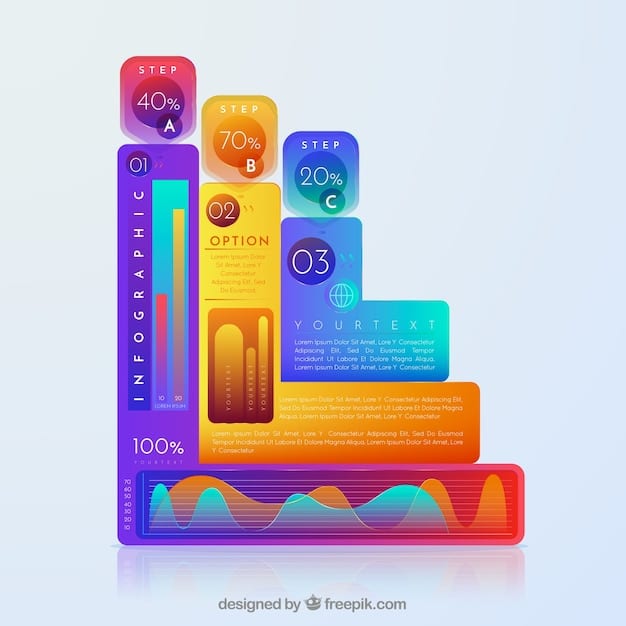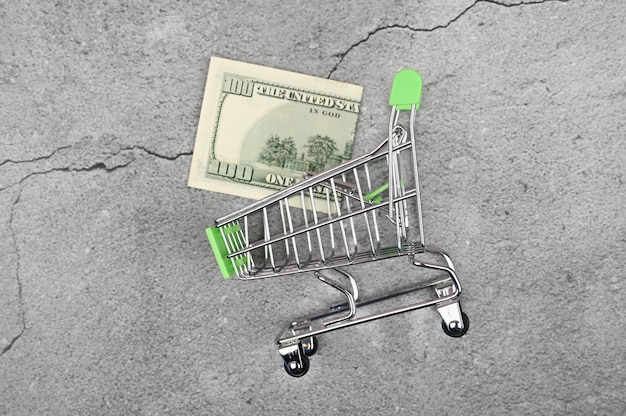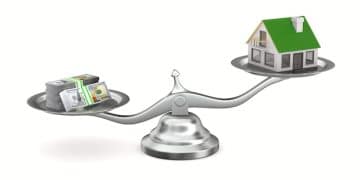Inflation Alert: Navigating Financial Impacts of CPI Data

Inflation Alert: How the Latest CPI Data Will Affect Your Finances examines the consumer price index (CPI) and its significant influence on personal finances, offering strategies to mitigate potential negative impacts.
The latest Inflation Alert: How the Latest CPI Data Will Affect Your Finances is more than just numbers; it’s a reflection of the real-world pressures on your wallet. Understanding these figures is the first step in making informed financial decisions that can buffer you from the effects of rising costs, and we’re here to help you navigate this complex landscape.
Understanding the Consumer Price Index (CPI)
The Consumer Price Index, or CPI, is a crucial economic indicator that measures the average change over time in the prices paid by urban consumers for a basket of consumer goods and services. It serves as a barometer for inflation, reflecting the overall cost of living and impacting everything from your grocery bill to your investment strategies.
Decoding the CPI involves understanding its components and how they contribute to the overall index. It’s not just a single number; it’s a composite of various categories, each weighted according to its relative importance in the average consumer’s spending.
Key Components of the CPI
The CPI is divided into eight major groups:
- Food and beverages: This includes food at home and away from home, as well as alcoholic beverages.
- Housing: This category encompasses rent, mortgage payments, property taxes, and utilities.
- Apparel: Clothing, footwear, and related services are covered here.
- Transportation: This includes vehicle purchases, gasoline, maintenance, and public transportation fees.
- Medical care: Costs associated with doctor visits, hospital services, prescription drugs, and medical insurance are included.
- Recreation: This covers entertainment goods and services, such as movies, sporting events, and vacations.
- Education and communication: Tuition fees, books, software, and communication services like internet and phone are part of this category.
- Other goods and services: This includes personal care products, tobacco, and miscellaneous expenses.
Each of these categories is weighted based on consumer spending patterns. For example, housing typically accounts for a larger share of the CPI than apparel, reflecting its greater importance in household budgets.

The CPI is a critical economic indicator that provides insights into inflation trends, helping consumers and businesses make informed decisions about spending, investment, and pricing strategies.
The Latest CPI Data: What It’s Telling Us
Recent CPI reports provide a snapshot of the current inflationary landscape, revealing whether prices are rising, falling, or remaining stable. These figures are closely scrutinized by economists, policymakers, and investors alike, as they offer clues about the health of the economy and potential future trends.
Analyzing the latest CPI data requires a keen eye for detail, looking beyond the headline number to understand the underlying factors driving inflation. Are rising energy prices the primary culprit, or are supply chain disruptions contributing to broader price increases?
Key Takeaways from Recent CPI Reports
Here’s a breakdown of some key trends revealed in recent CPI reports:
- Inflation Remains Elevated – The overall CPI continues to show inflation above the Federal Reserve’s target rate, indicating persistent price pressures in the economy.
- Energy Prices Volatile – Fluctuations in energy prices have had a significant impact on the CPI, with increases often leading to higher overall inflation.
- Core Inflation Sticky – Excluding volatile food and energy prices, core inflation remains stubbornly high, suggesting that underlying inflationary pressures are not easily dissipating.
- Housing Costs Rising – Rent and housing costs have been steadily increasing, contributing significantly to overall inflation.
Understanding these trends is essential for assessing the potential impact on your personal finances. Rising inflation can erode purchasing power, making it more expensive to buy everyday goods and services.
Staying informed about the latest CPI data is essential for making sound financial decisions that protect your purchasing power and prepare for the future.
How Inflation Impacts Your Finances
Inflation, as measured by the CPI, has a far-reaching impact on various aspects of your personal finances, affecting everything from your purchasing power to your investment returns. Understanding these effects is crucial for developing strategies to mitigate potential negative consequences.
One of the most direct impacts of inflation is the erosion of purchasing power. As prices rise, each dollar buys less, effectively reducing the amount of goods and services you can afford. This can strain household budgets, especially for those with fixed incomes.

Inflation’s Impact on Different Areas of Your Finances
Here’s how inflation can affect different aspects of your financial life:
- Everyday Expenses – Higher prices for food, gas, and other essential goods and services can strain your budget, leaving less room for discretionary spending.
- Savings – Inflation can erode the real value of your savings if interest rates don’t keep pace with rising prices.
- Investments – Inflation can impact investment returns, as it reduces the real value of future cash flows.
- Debt – While inflation can reduce the real value of fixed-rate debt, it can also lead to higher interest rates on new loans and variable-rate debt.
By understanding the various ways inflation can impact your finances, you can take steps to protect your purchasing power and achieve your financial goals.
Adapting your financial strategies to account for inflation is a proactive way to safeguard your financial well-being and minimize the negative impacts of rising prices.
Strategies to Protect Your Finances from Inflation
While inflation can pose challenges, there are several strategies you can employ to protect your finances and mitigate its negative effects. These strategies involve adjusting your spending habits, optimizing your investments, and taking advantage of opportunities to increase your income.
One of the most effective ways to combat inflation is to create a budget and track your spending. By understanding where your money is going, you can identify areas where you can cut back or find better deals.
Actionable Steps to Beat Inflation
Here are some practical steps you can take to protect your finances:
- Create a Budget – Track your income and expenses to identify areas where you can save money.
- Negotiate Bills – Contact service providers to negotiate lower rates on your internet, phone, and insurance bills.
- Shop Around – Compare prices at different stores and online retailers to find the best deals.
- Invest in Inflation-Resistant Assets – Consider investing in assets that tend to perform well during inflationary periods, such as real estate, commodities, and Treasury Inflation-Protected Securities (TIPS).
Implementing these strategies can help you stay ahead of inflation and maintain your financial stability.
Taking proactive steps to manage your finances in an inflationary environment can empower you to weather the storm and achieve your long-term financial goals.
Investing in Inflation-Resistant Assets
Investing in assets that tend to perform well during inflationary periods can be a smart way to protect your portfolio’s value and generate returns that outpace rising prices. These assets, often referred to as inflation hedges, offer a potential buffer against the erosion of purchasing power.
One popular inflation-resistant asset is real estate. Historically, real estate values have tended to rise during inflationary periods, as demand for housing increases and rents tend to keep pace with rising prices.
Exploring Different Inflation Hedges
Here’s a closer look at some common inflation-resistant assets:
- Real Estate – Investing in rental properties or real estate investment trusts (REITs) can provide a steady stream of income and potential for capital appreciation.
- Commodities – Investing in commodities like gold, silver, and oil can offer protection against inflation, as their prices tend to rise when inflation increases.
- Treasury Inflation-Protected Securities (TIPS) – TIPS are government bonds that are indexed to inflation, meaning their principal value increases as the CPI rises.
Diversifying your portfolio with these assets can help you mitigate the negative impacts of inflation and preserve your wealth over time.
Choosing the right inflation-resistant assets depends on your risk tolerance, investment goals, and time horizon.
Adapting Your Spending Habits to Inflation
Adjusting your spending habits in response to rising inflation is a practical way to maintain your financial stability and minimize the impact of higher prices on your budget. This involves making conscious choices about where you spend your money and finding creative ways to save.
One effective strategy is to prioritize essential spending and cut back on discretionary expenses. This may involve reducing your dining-out budget, canceling subscriptions you don’t use, or finding cheaper alternatives for entertainment.
Strategies for Adapting to Inflationary Pressures:
- Prioritize Needs over Wants: Focus on essential spending and cut back on discretionary purchases.
- Look for Discounts and Deals: Take advantage of sales, coupons, and loyalty programs to save money on groceries and other essentials.
- Consider Generic Brands: Opt for generic or store-brand products, which are often cheaper than name-brand alternatives.
By adopting smart spending habits, you can stretch your budget further and better cope with rising prices.
Adjusting your spending habits in response to inflation is a proactive way to maintain your financial well-being and achieve your goals.
| Key Point | Brief Description |
|---|---|
| 💰 Impact of CPI | CPI data reflects changing cost of living, affecting purchasing power. |
| 📈 Investment Strategies | Consider assets performing well during inflation, like real estate or commodities. |
| 🛒 Budgeting Tips | Track expenses, negotiate bills, and seek discounts to manage spending. |
| 🛡️ Protecting Savings | Ensure savings interest rates keep up with inflation to preserve value. |
Retractable FAQs
▼
The CPI measures the average change over time in the prices paid by urban consumers for a basket of consumer goods and services. It is a key indicator of inflation levels.
▼
As inflation rises, the cost of everyday goods and services increases, decreasing your purchasing power. You’ll need more money to buy the same items.
▼
Investing in assets like real estate, commodities (such as gold), and Treasury Inflation-Protected Securities (TIPS) can help hedge against inflation.
▼
Consider creating a budget, negotiating bills, shopping around for better deals, and opting for generic brands to save money.
▼
Make sure the interest rates on your savings accounts or investments are high enough to outpace the current inflation rate.
Conclusion
Understanding and responding to Inflation Alert: How the Latest CPI Data Will Affect Your Finances is essential for maintaining financial stability. By monitoring CPI trends, adjusting spending habits, and making informed investment decisions, you can navigate inflationary periods effectively and safeguard your financial future.





